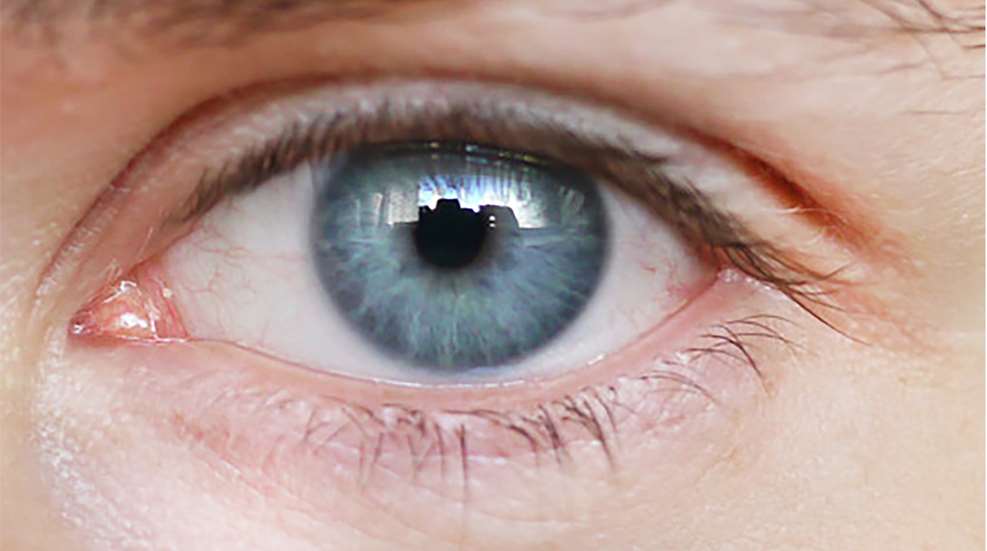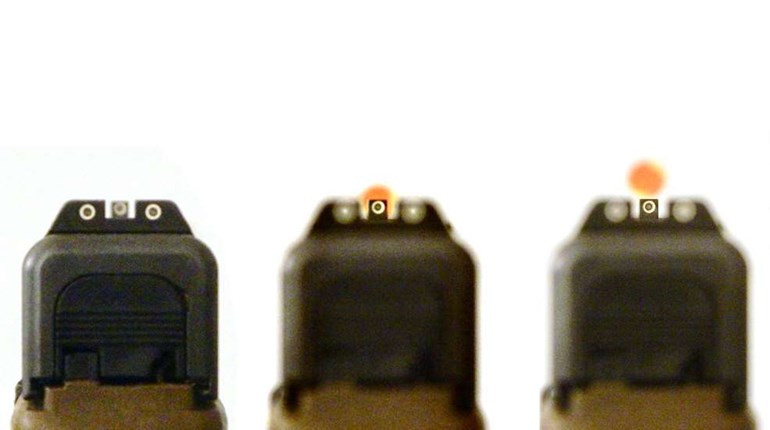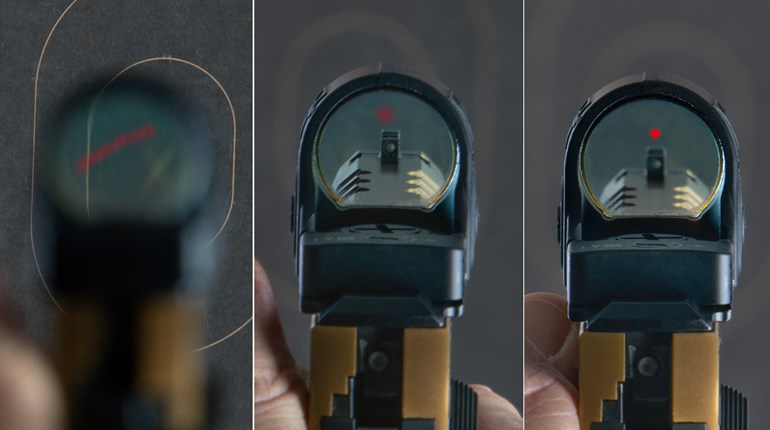
Expert marksmanship requires the seamless integration of visual acuity and mechanical body control. A shooter’s eyes and posture must operate in perfect synchrony to hit targets with minimal MOA accuracy, especially at extreme distances and/or high-performance speeds. As firearm technology, vision aids and training techniques progress, marksmen are achieving unprecedented accuracy through the complete fusion of visual acuity and bodily mechanics.
Long gunners rely on a trusted spotter, whose visually enhanced vantage point provides minute accuracy at ranges upwards of 1,000 yards.
Spotting scopes magnify vision up to 30X, discerning details the naked eye would miss. Wind direction, shot placement and tiny aiming adjustments become crystal clear. This acute perspective allows spotters to function like an external set of eyes for the shooter. They provide granular guidance such as “2 minutes left, 1 minute down” to precisely walk shots onto distant targets. Top-tier long gunners know to fully trust their spotter’s vision as an extension of their own.
Iron Sights vs Red Dot Sights
Combat or competition pistol shooters don’t use spotters and must rely on their own visual acuity both for visual focus and visual awareness.
Traditional iron-sights users are familiar with and accustomed to eye-prints identifying a ‘shoot target’ by running their visual focus to the target, while aware of the front sight (1) and then back from the target toward the front sight while maintaining target awareness (2) and then again back to the target again for verification (3) for a total of three focal-plane shifts.
Shifting your focal plane from the target to the sights and back to the target as an iron-sights shooter, while maintaining visual awareness of the opposing object not in focus, is an acquired skill.
Conversely an optics shooter does not need to make a focal-plane shift and simply stays target focused. However, they must also share in the separation of visual focus from visual awareness. In the case of red-dot systems (RDS) they are required to maintain sharp target focus but remain equally as cognizant (visually aware) of their red dot.
When it comes to visual-skills development, the iron-sights shooter is burdened with both eye sprints and differentiating their visual focus from their visual awareness whereas the carry optics shooter, although not needing to shift focal planes, shares the same onus of separating visual focus from visual awareness.
Smart Bio-Feedback
Digitally enhanced training targets facilitate marksmanship advancement by providing instantaneous ballistic-impact analysis. Optical sensors relay real-time graphics of each bullet’s placement upon the target directly back to the firing position. Shooters can immediately diagnose and adjust both body-position inconsistencies as well as inadvertently perfectly aimed “near miss” shots. This biofeedback rapidly accelerates a marksman’s precision and trains body mechanics via repeat-motion reinforcement for sub-minute-of-angle accuracy.
As firearm tech advances in tandem with human technique mastery, expert marksmanship will require fully embracing visual aids as an integrated performance aspect. Much as top-fuel drag racers are intrinsically fused with their highly augmented vehicles through years of hands-on optimization, shooters must unite with every ergonomic rifle tweak and optical upgrade as part of the complete human-machine system.
Long gunners can anticipate the next echelon of super-enabled marksmanship will intuitively factor ballistics programs, wind readings, range estimations and other variables with each subconscious movement.
Already DARPA’s “Brain Computer Interface” experiments enable basic ocular enhances like crosshairs without the need for external optics. Such fluid bio-digital synthesis is the future for tech-savvy sharpshooters.
At the professional level, perfection lies at the nexus of aligned vision and attuned body mechanics. Whether long-distance Olympic gold, a World Shooting Competition or specialized sniper ops, peak accuracy arises from this harmonious synchronicity. When acute sight and refined body mechanics fully coalesce, the struggle for precision falls away. The muzzle becomes an extension of self and terminal ballistics an effortless affair. This is the unified biomechanical and visual interface that defines next-level marksmanship.
Essential Physiology
Precision marksmanship depends as much on strengthening the appropriate muscle groups in one's grip and posture as it does in developing visual acuity. By isolating each of these anatomical structures used for consistent and reliable muzzle alignment, shooters can dramatically magnify their hit factors.
While the ubiquitous trigger press draws obvious attention, exercise regimens now also target extensor muscles across the back of the forearm. These muscles can minimize lateral barrel movement when shooting, holding aim steadier through recoil impulse and rotation. Weighted wrist curls can build extensor endurance, so orientation wavers less. Anti-fatigue training can prevent degradation and foster both durable grip and shooting posture.
Core strength training further promotes structural alignment and supports recoil control. Enhanced resistance training such as spinal and pelvic muscle strengthening, can provide a stable firing platform essential for reduced reaction times and enduring muzzle stability.
Basic eye exercises can condition ocular muscles for peak visual acuity, focal plane shifting and the separation of visual focus from visual awareness.
Shooters who can fuse visual acuity (to include eye sprints, visual focus and visual awareness), with their body mechanics into an integrated firing platform, have cracked the code on optimizing their physiology with their shooting fundamentals.





































